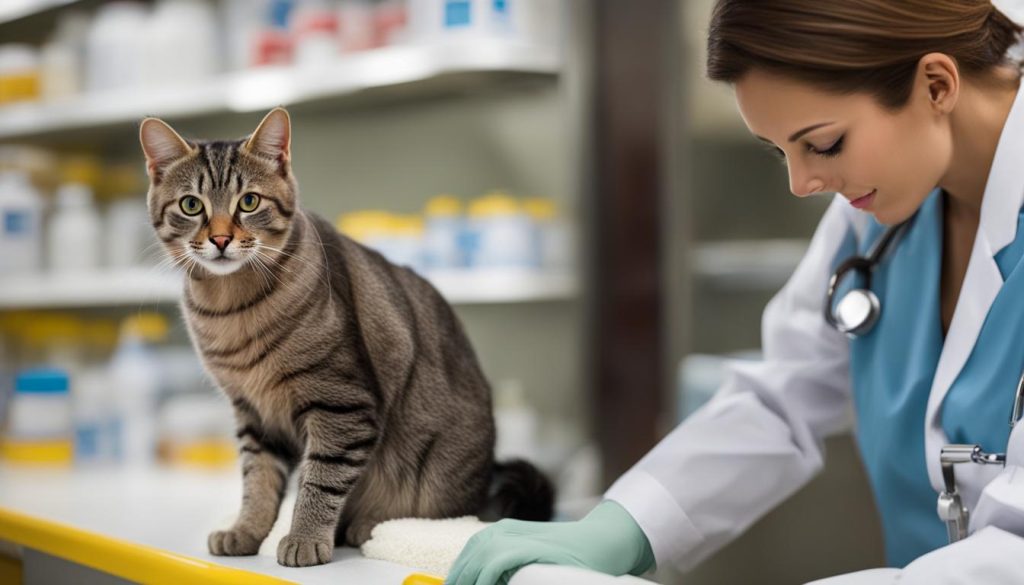Getting your cat spayed or neutered is an important part of responsible pet ownership. Not only does it help control pet overpopulation, but it also provides numerous health benefits for your feline friend. But what is the average cost to get a cat neutered? Let’s explore.
The cost of spaying or neutering a cat can vary depending on several factors. These factors include the cat’s age, size, location, and the specific vet performing the procedure. Generally, spaying is more expensive than neutering due to its more involved surgical nature. The cost may also include additional factors such as pre-op exams, anesthesia, surgery time, and post-op recovery care.
Now, you might be wondering about the actual price of cat neutering. On average, the cost can range from $250 to $2,000. However, it’s important to note that this is just an estimation, and the actual cost may differ based on the mentioned factors.
Average Cost to Get a Cat Neutered
- The average cost of getting a cat neutered ranges from $250 to $2,000.
- Factors such as age, size, location, and the specific vet can influence the cost.
- Spaying is generally more expensive than neutering.
- Additional factors like pre-op exams, anesthesia, and post-op care may be included in the cost.
- Discuss pricing and what is included with your veterinarian before scheduling the procedure.
Now that you have a better understanding of the average cost to get a cat neutered, you can make an informed decision about your pet’s health and well-being. Remember to consult with your veterinarian to discuss the specific details, options, and pricing that apply to your cat’s situation. By investing in spaying or neutering, you are not only ensuring a longer and healthier life for your cat but also contributing to responsible pet ownership.
What is Spaying and Neutering?
Spaying and neutering are essential surgical procedures that assist in controlling the pet population and promoting responsible pet ownership. Spaying involves the removal of the ovaries and uterus in female cats, while neutering involves removing the testicles in male cats. These procedures permanently sterilize the cat, preventing them from reproducing and contributing to the overpopulation of stray cats.
Spaying is a more complex surgery compared to neutering, as it involves removing the internal reproductive organs in female cats. However, both procedures are routine and safe, especially when performed on younger cats. They are usually conducted by experienced veterinarians in a controlled environment, ensuring the well-being and comfort of the cat.
During the spaying or neutering procedure, the cat is placed under anesthesia, and the surgical process typically takes between 10 to 30 minutes. After the surgery, the cat may require a brief recovery period to minimize any discomfort and ensure proper healing.
One of the significant advantages of spaying and neutering is the prevention of various medical conditions. Spaying female cats reduces the risk of uterine infections and breast cancer, while neutering male cats decreases the likelihood of testicular cancer and aggressive behaviors like spraying and fighting. Additionally, spayed or neutered cats have a reduced risk of certain types of cancer, bacterial infections, and viral diseases.
Benefits of Spaying and Neutering
- Controls pet population and prevents unwanted litters
- Reduces the risk of certain medical conditions, including cancer and infections
- Decreases aggressive behaviors like spraying and fighting in male cats
- Promotes a longer and healthier life for cats
By choosing to spay or neuter your cat, you are not only ensuring their well-being but also making a positive impact on the overall feline population. As responsible pet owners, it is crucial to consider the long-term benefits and contribute to the welfare of cats worldwide.
Factors Affecting the Cost
The cost of spaying or neutering a cat can be influenced by several factors. These include the cat’s age, size, location, and the specific veterinarian performing the procedure. Spaying, which involves the removal of the ovaries and uterus in female cats, is generally more expensive than neutering, which involves the removal of the testicles in male cats.
Spaying is a more complex and time-consuming surgical procedure, which can contribute to the higher cost. Additionally, there are other cost variables that may affect the overall expense. These can include pre-operative exams, anesthesia, medications, post-operative recovery care, and any additional services or extras requested by the owner, such as claw trimming.
It’s important to have a thorough discussion with your veterinarian regarding pricing and what is included in the cost before scheduling the procedure. This will help you understand all the factors influencing the cost and ensure there are no surprises.

Payment Options for Spaying and Neutering
When it comes to spaying and neutering your cat, there are several payment options available to help cover the cost. This ensures that responsible pet ownership is accessible to all. Here are some payment options to consider:
1. Paying upfront
One option is to pay upfront at the time of the procedure. Many veterinary clinics and hospitals accept various forms of payment, including cash, credit cards, and debit cards. This method allows for immediate payment and avoids the hassle of setting up payment plans or waiting for reimbursement.
2. Payment plans
If paying the entire cost upfront is not feasible for you, consider setting up a payment plan with your veterinarian. Some veterinary clinics offer payment plans that allow you to pay the total cost in installments over a set period of time. This can help make the cost more manageable and spread out the financial burden.
3. Pet insurance
Another option is to utilize pet insurance to help cover the cost of spaying or neutering your cat. Many pet insurance providers offer coverage for these procedures, depending on the specific policy. Before proceeding, make sure to check with your insurance provider to understand what is covered and what documentation is required.
4. Low-cost spay/neuter clinics or programs
Low-cost spay/neuter clinics or programs are available in many communities. These clinics often offer reduced prices or discounted rates for spaying and neutering procedures. Additionally, some nonprofits and animal shelters provide free or low-cost spay/neuter services for those who qualify. Research your local area to find organizations that offer these services.
By exploring these payment options, you can ensure that your cat receives the necessary spaying or neutering procedure without breaking the bank. Remember, responsible pet ownership includes taking the necessary steps to prevent unwanted litters and maintain the health and well-being of your feline companion.

Benefits of Spaying and Neutering
There are numerous benefits to spaying and neutering cats. By choosing to have your cat undergo these procedures, you are actively contributing to the control of the pet population and preventing unwanted litters.
Spaying a female cat, through the removal of the ovaries and uterus, not only eliminates the risk of pregnancy but also helps prevent uterine infections and breast cancer, a common and potentially life-threatening condition in unspayed cats.
Neutering a male cat, by removing the testicles, not only eliminates the risk of impregnating other cats but also significantly reduces the likelihood of testicular cancer and aggressive behaviors like spraying and fighting.
But the benefits of spaying and neutering extend well beyond reproductive health. These procedures can also lead to longer and healthier lives for cats, with decreased risks of various medical conditions.
For female cats, early spaying, preferably before the first heat cycle, provides additional health benefits, including a significantly reduced risk of mammary cancer, another common and potentially fatal condition in cats.
Neutering male cats also helps reduce their urge to roam and engage in territorial fights, which can result in injuries and the transmission of infectious diseases.
Spaying and neutering not only benefit the individual cat but also create a positive impact on the community and environment. By preventing the birth of unwanted kittens, these procedures help reduce the number of stray cats and the strain on animal shelters and rescue organizations.
Conclusion
Spaying or neutering your cat is a crucial decision for responsible pet ownership. The average cost of cat neutering can vary depending on factors such as age, size, and location. On average, it ranges from $250 to $2,000.
When considering cat neutering, it’s important to have a conversation with your veterinarian. Discuss the procedure, available options, and pricing to ensure the best care for your feline companion.
By spaying or neutering your cat, you not only contribute to controlling pet overpopulation but also prevent unwanted behaviors and potential medical complications. It promotes a longer and healthier life for your beloved pet.
Explore payment options and resources in your area to make cat neutering accessible to all cat owners. Remember, responsible pet ownership starts with making the right choices for the wellbeing of your cat.






